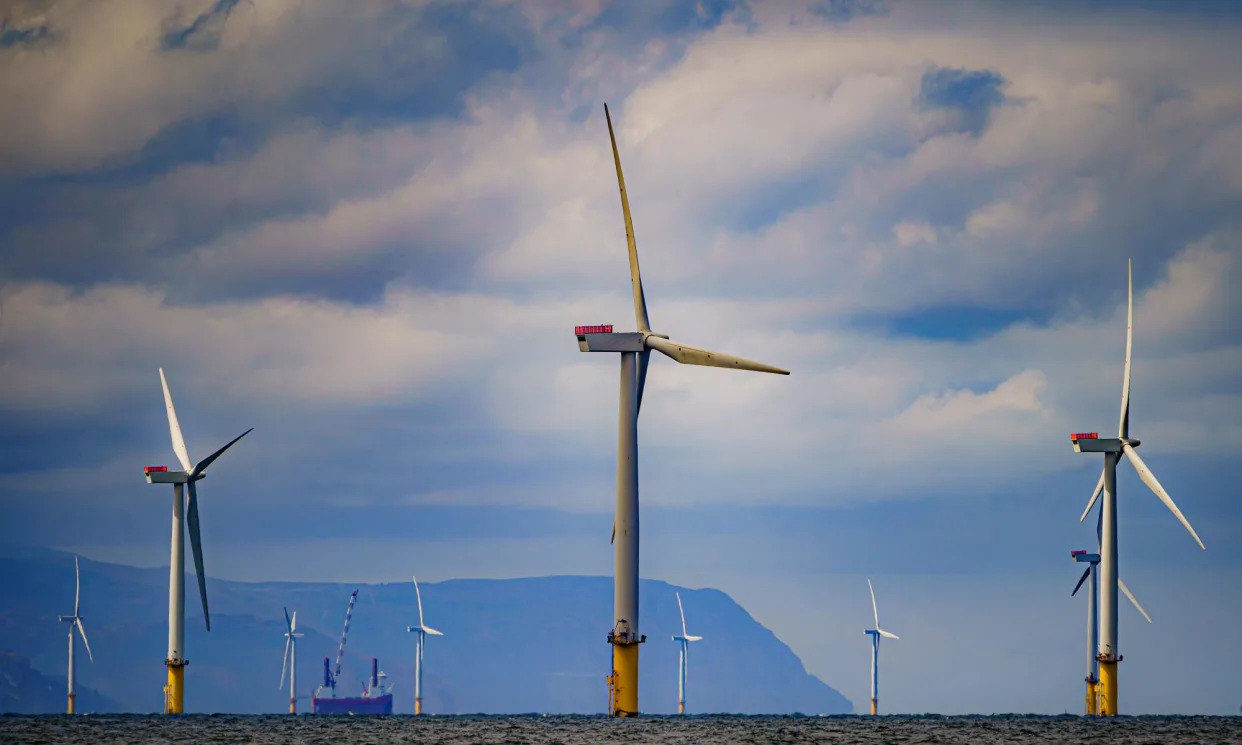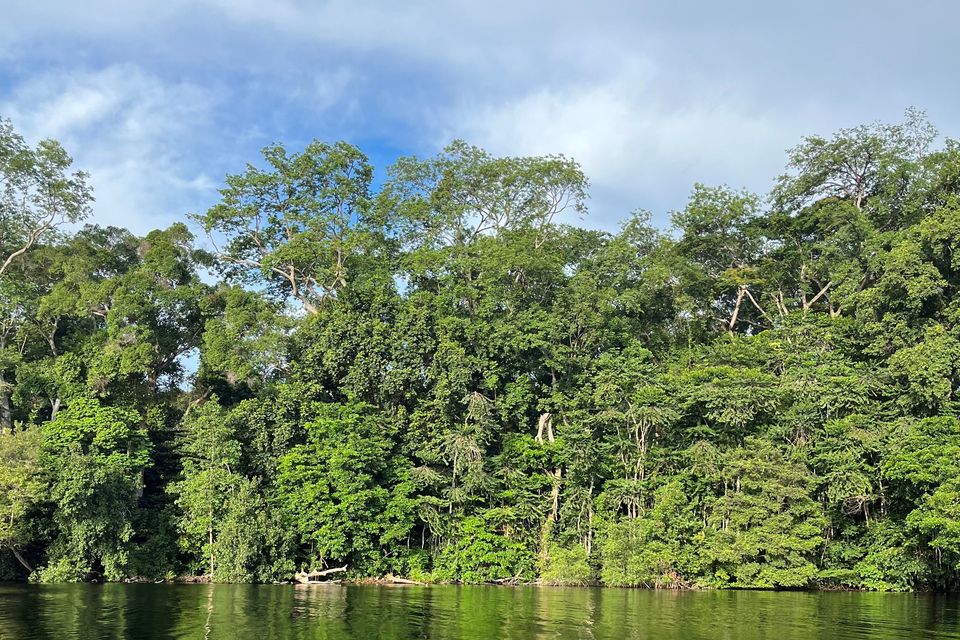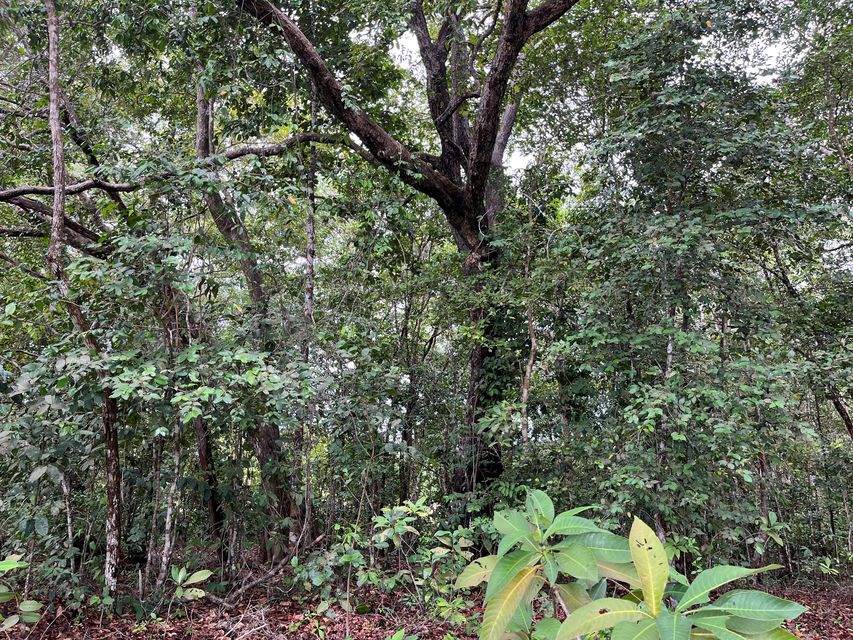Raging wildfires exacerbated by climate change are pumping out vast quantities of carbon dioxide (CO2). This pollutes the atmosphere, raising temperatures even more and creating a fires-climate feedback loop that will only get worse, say experts.
In northern latitudes, which are especially prone to this feedback loop, Canada and Russia are this summer suffering devastating and unprecedented wildfires.
Canada, at least, does not account to the UN for the CO2 from wildfires.
In western Canada in late July, as much as 10% of oil production was endangered by 170 wildfires, of which 53 were out of control. For Canada, the 2023/2024 winter season was the warmest on record.
As many as half of the buildings in tourist town of Jasper in Alberta in the Rocky Mountains were incinerated, with some 20,000 tourists and 5,000 residents fleeing the flames.
Queen Elizabeth II holidayed there, and Hollywood’s royalty – such as Marilyn Monroe, Bing Crosby and Joan Fontaine – often frequented too.
Smoke had reached as far as Chicago.
Canada’s 2024 wildfire season – driven by hot and dry weather – may be worse than 2023, when there was billions of dollars of damage and air pollution that darkened the skies as far away as Europe and China.
According to the respected Washington-based World Resources Institute (WRI) and the University of Maryland, Canada’s 2023 wildfires burned around 7.8mn hectares of forests — more than six times the annual average since 2001.
This amount of tree cover loss produced roughly 3bn tonnes of CO2 – nearly four times the carbon emissions of the entire global aviation sector in 2022, and 25% more than from all tropical primary forest loss combined in 2023.
“Due to Canada’s emissions accounting methods, most of the country’s wildfire-related emissions will not be officially reported in the UN’s global inventory, despite their substantial contribution to climate change,” said WRI.
Not all countries fail to account for wildfire-caused emissions. But Canada does. According to a 2021 report by a special advisor to Nature Canada, excluding wildfire emissions in managed forests in Canada may underestimate the country’s GHG emissions by 80mn tonnes per year (tpy).
The 2023 wildfires in Canada accounted for more than a quarter of all tree cover loss globally that year, said WRI. Québec, Northwest Territories, Alberta and British Columbia all experienced record-high tree cover loss due to fires in 2023, said the research think-tank.
“The planet is burning up and climate change is indeed a significant factor,” Canada’s Minister of Natural Resources, Jonathan Wilkinson, said at a press conference earlier this summer. He said that climatologists are forecasting “an alarming but all too predictable trend. The intensity of wildfires will continue.”

Wildfires are currently blazing out of control in large parts of the western US
Another recent WRI analysis suggests that globally, forest fires are burning nearly twice as much tree cover today as 20 years ago. In northern latitudes, land surface temperatures are warming at rates roughly double the global average, says the think-tank.
Higher temperatures caused by the climate crisis desiccate the landscape and make forests more vulnerable to fire, driving lengthier fire seasons and larger fires.
As larger forested areas burn, more carbon is emitted into the atmosphere, further exacerbating climate change and contributing to even more fires as part of a fires-climate feedback loop, added the WRI.
“With climate change expected to increase annual burned area by 30-50% globally by the end of the century, wildfires will become an increasingly large source of carbon emissions, further exacerbating climate change,” said the think-tank.
Russian fires
In Russia, wildfire destruction is at nearly 5mn hectares of forest so far this summer, says the Aerial Forest Protection Service, quoted by the Moscow Times. The republic of Sakha in the Far East, which encompasses parts of the Arctic, is the worst hit.
The area devastated has increased for three years in a row. In the entire wildfire season in 2023 and 2022, blazes destroyed 4.6mn and 3.5mn hectares respectively, said Kedr Media.
As of July 22, as many as 126 wildfires were burning in forests in 11 Russian regions of covering 428,726 hectares, Kedr Media also reported. Sakha accounted for the most, 64,500 hectares of wildfires in forests, then Irkutsk Oblast (5,092 hectares) and Buryatia (2,404 hectares), said the environmental outlet.
According to space monitoring data as of July 16, the acreage ravaged by all fires – in forests, on steppes and in peat areas – in Russia was more than 8.8mn hectares, said Kedr.
In 2021, record-breaking fires charred 18mn hectares of forests – let alone steppes and peat – across Russia, says the Moscow Times. The Sakha Republic was especially hard hit.
Peat fires, in drained marches, can burn for months. They can even smoulder underground through the winter, despite snow.
In the devastating wildfire season of 2010 in Russia, the country’s hottest summer in a millennium, the NGO Wetlands International estimated that 80-90% of the smog in Moscow was from nearby peatland fires, not forest fires, reported Reuters.
‘Zombie fires’ can also occur in northern Canada. In April, smouldering fires left by last year’s wildfires were threatening oil and gas wells. As many as 50 zombie fires were still burning beneath the snow near wells, according to government data analysed by Bloomberg.
Fire emissions
Recently, the European Union's Copernicus Atmosphere Monitoring Service’s (CAMS) global fire assimilation system data showed that the June 2024 monthly total estimated wildfire carbon emissions for the global Arctic were high, at just under 8.2 mega-tonnes of carbon. Most of the activity was in Sakha, in Russia.
With values calculated up to 26 June, estimated wildfire carbon emissions for the Arctic for the month were already the third highest in the service’s data record dating back two decades.
"The Arctic has been warming at a rate well above that of the planet as a whole, said CAMS senior scientist Mark Parrington. “As a result, conditions at high northern latitudes are becoming more conducive to wildfires and a recent study shows that the northeast Arctic region, and boreal and temperate forests, have been experiencing increases in extreme wildfires.
“We witnessed this in 2019, 2020 and 2021, when the eastern Arctic and sub-Arctic regions experienced very high levels of wildfire activity, and again in 2023, especially at high latitudes in Canada," he said.
The Arctic is ground zero for climate change, says Professor Gail Whiteman from the University of Exeter and founder of Arctic Basecamp, a team of Arctic experts and scientists.
“The increasing Siberian wildfires are a clear warning sign that this essential system is approaching dangerous climate tipping points,” she said. “What happens in the Arctic doesn't stay there – Arctic change amplifies risks globally for all of us. These fires are a warning cry for urgent action," she said.
_Cropped_resized.jpg)








